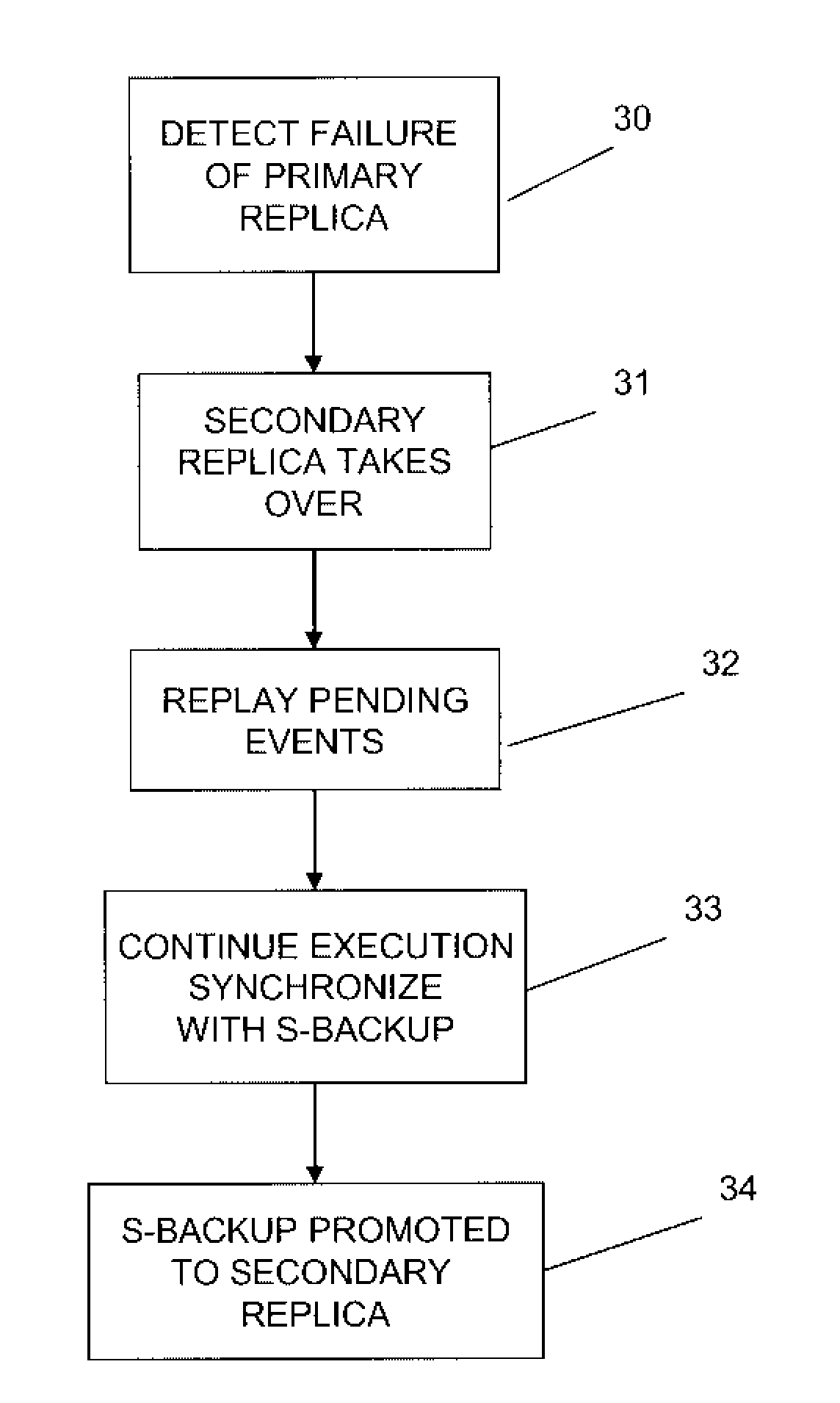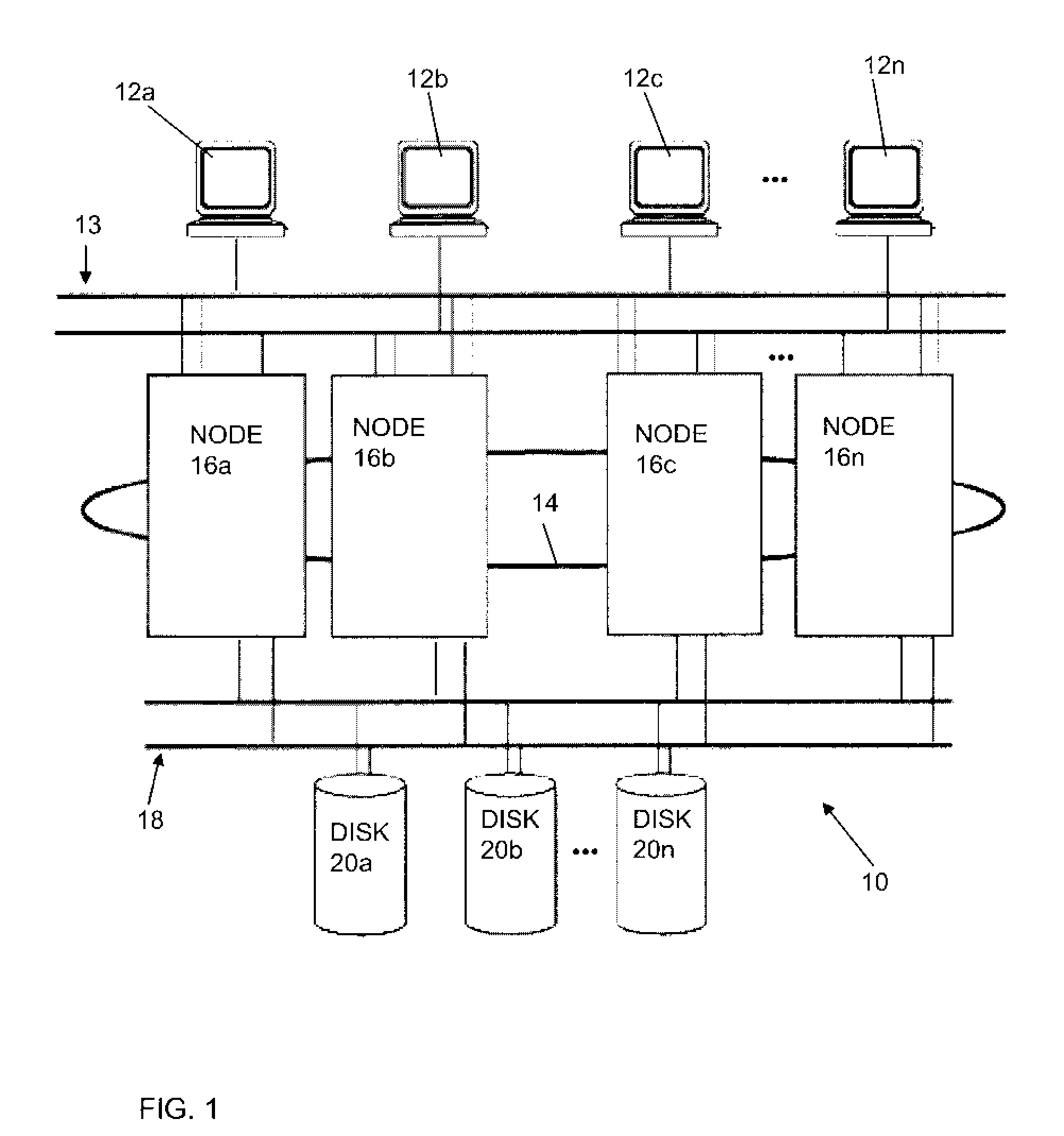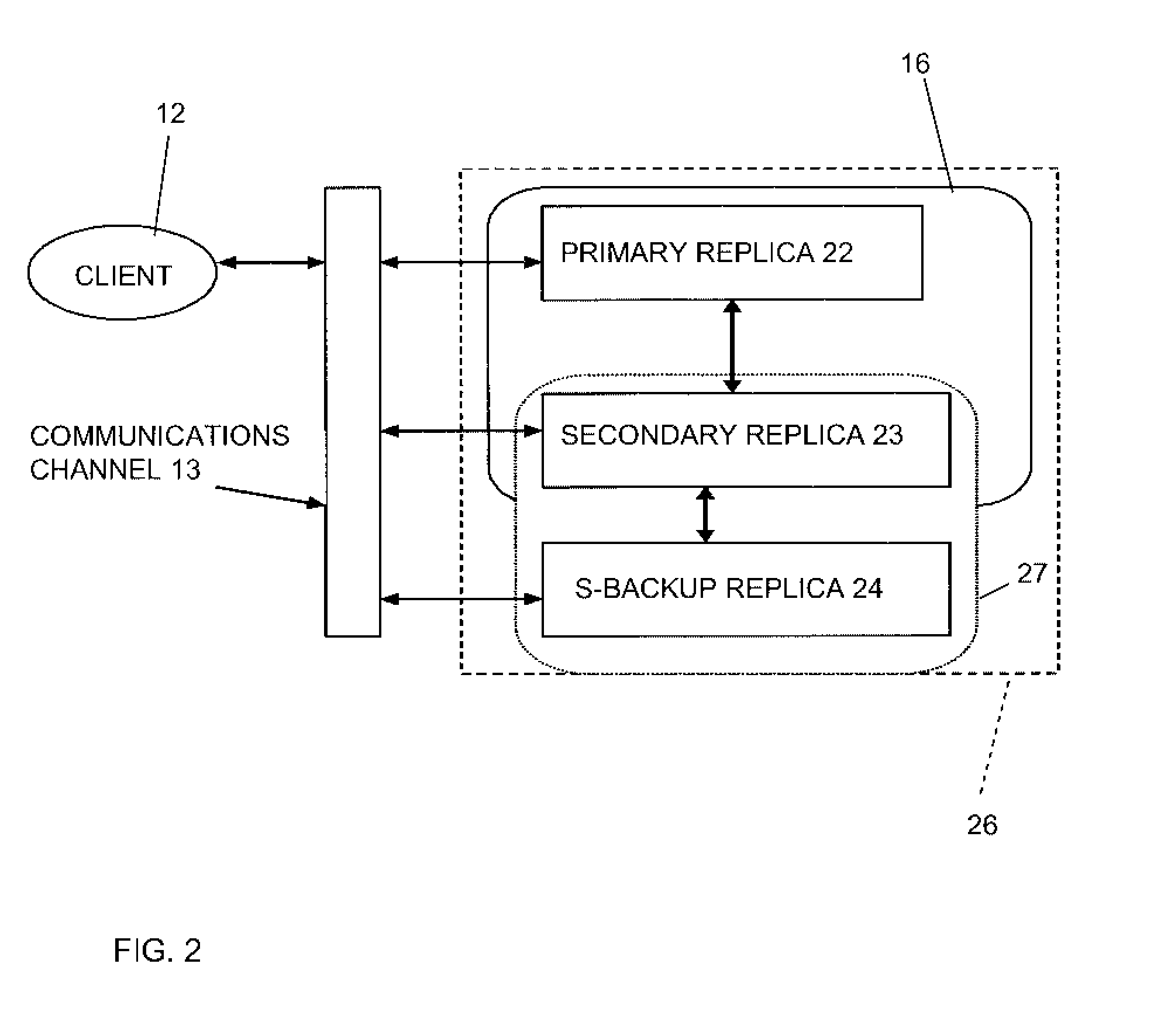Secondary Backup Replication Technique for Clusters
a clustering and backup technology, applied in the field of backup replication, can solve the problems of low response time, potential vulnerability to failure, and compromise of the availability of the whole system, and achieve the effect of reducing the overhead of run-time and recovery tim
- Summary
- Abstract
- Description
- Claims
- Application Information
AI Technical Summary
Benefits of technology
Problems solved by technology
Method used
Image
Examples
Embodiment Construction
[0026]FIG. 1 illustrates one example of a clustered computer system 10 having one or more clients 12a-12n, a communications system 13 and 14, nodes 16a-16n, disk busses 18, and one or more shared disks 20a-20n. It will be understood that the system 10 is an example only, and that other clusters usable with the present invention may look very different depending on the number of processors, the choice of network and the disk technologies used, and so on. It will be understood that a client 12 is a processor that can access the nodes 16 over a local area network such as a public LAN as illustrated at 13 or a private LAN illustrated at 14. Clients 12 each run a “front end” or client application that queries the server application running on a cluster node 16. It will also be understood that in the system of FIG. 1, each node 16 has access to one or more shared external disk devices 20. Each disk device 20 may be physically connected to multiple nodes. The shared disk 20 stores mission-...
PUM
 Login to View More
Login to View More Abstract
Description
Claims
Application Information
 Login to View More
Login to View More - R&D
- Intellectual Property
- Life Sciences
- Materials
- Tech Scout
- Unparalleled Data Quality
- Higher Quality Content
- 60% Fewer Hallucinations
Browse by: Latest US Patents, China's latest patents, Technical Efficacy Thesaurus, Application Domain, Technology Topic, Popular Technical Reports.
© 2025 PatSnap. All rights reserved.Legal|Privacy policy|Modern Slavery Act Transparency Statement|Sitemap|About US| Contact US: help@patsnap.com



